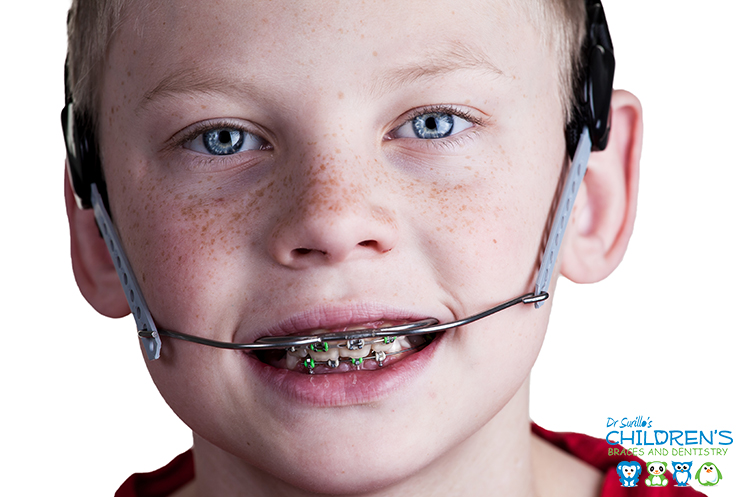What is a Severe Overbite and How Can it Be Treated?

La Mesa, CA – An overbite is a malocclusion that is characterized by overlap of the upper and lower teeth. In a normal bite, a small degree of overlap is ideal, but in an orthodontic patient who has a severe overbite, the top teeth will extend significantly over the bottom teeth.
Overbites can be hereditary – the result of a misformed jaw, or they can be the result of habits formed in childhood that prevented the jaws from growing properly. Thumb sucking, extended bottle feeding, and tongue thrust are all habits that can lead to an overbite.
“The most common thing that will lead to an overbite is the shape and/or size of the patient’s jaw,” says Dr. Santiago Surillo, a La Mesa pediatric dentist and orthodontist. “If an overbite isn’t treated by an orthodontist, the teeth will become misaligned and the patient’s bite will suffer, which can lead to issues such and TMJ pain, headaches, tooth decay, difficulty eating and speaking, and other problems.”
After an examination, an orthodontist can determine the best course of treatment to treat your child’s overbite. X-rays, impressions, and digital photographs can give the orthodontist a clear picture of what is going on in your child’s mouth, allowing the orthodontist to fully understand the alignment between the jaws, as well as the spacing of the teeth.
Your child should see an orthodontist by the age of seven to begin monitoring. While most children won’t require orthodontic work at this age, beginning the relationship is beneficial because it allows the orthodontist to determine if there are issues that are a cause for concern, and then begin treatment at precisely the right time to have the most impact on the patient’s mouth.
“Some patients greatly benefit from two phase orthodontic treatment,” says Dr. Surillo. “In this, we begin treatment at a younger age, allowing for adequate space for the permanent teeth to erupt, and/or focus on correcting jaw discrepancies. This then makes the tooth straightening phase of the treatment much more effective and efficient.”
There are several appliances that may be used to correct an overbite during orthodontic treatment.
- The Herbst appliance is a fixed appliance that encourages the lower jaw to catch up to the growth of the upper jaw. It will be attached to the back molars and lower jaw with bands that are cemented in place. Then, it will work to prevent the lower jaw from moving backward.
- Headgear is worn 12-14 hours a day, and works to prevent the upper jaw from continuing to grow out of proportion with the lower jaw. The headgear works to create forces that will guide the growth of the jaw and face.
- Forsus is an alternative to headgear, and works to correct overbites, improve the fit of teeth, and hopefully avoid jaw surgery.
- Elastics, or rubber bands, help to correct the fit of the jaws, and should be worn as the orthodontist recommended to ensure treatment stays on track.
“The most ideal time to correct an overbite is during the adolescent years,” says Dr. Surillo. “In children whose jaws haven’t finished developing, we can guide the growth to create harmony in the upper and lower jaws. For older patients, we can still correct their overbites, however, treatment will be more involved and could involve extractions or surgery.”
Be sure to schedule your child’s first orthodontic consultation around the age of seven. This will ensure orthodontic treatment, if needed, can begin at precisely the right time to have the biggest impact on your child’s smile. To schedule an appointment with Dr. Surillo, call 619-461-6166.

